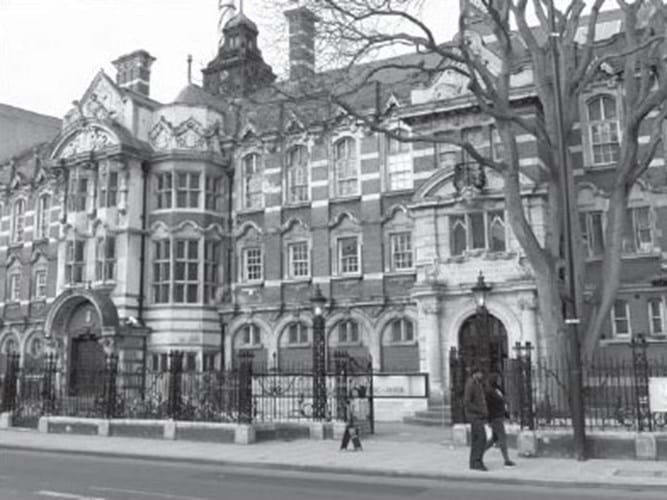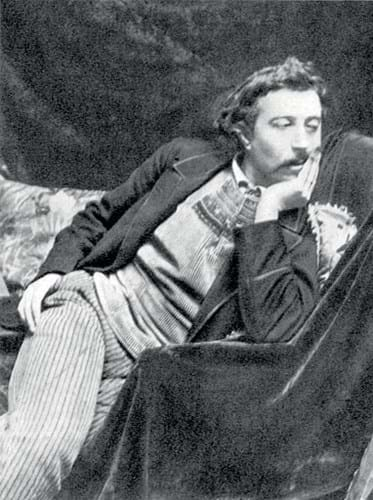1887-88: Paul Gauguin (1848- 1903) produces his own studio pottery, developing a technique of hand-sculpting clay without using a potter’s wheel.
1890-1918: George Ohr (1857-1918) makes sculptural work on the wheel at Biloxi, Mississippi. Dying unrecognised, Ohr is now seen as a groundbreaking potter and his work much sought after today.
1908: Camberwell School of Arts and Crafts becomes the first art college to teach ceramics as a single subject, with William Staite-Murray (1881-1962) among its first students. Later known as the Camberwell College of Arts, its illustrious tutors have included Colin Pearson, Lucie Rie, Hans Coper, Richard Slee and Annie Turner.

Camberwell School of Arts and Crafts, where ceramists such as William Staite-Murray learnt their craft.
1921: Bernard Leach (1887-1979) at 34 returns to Britain from the Orient with his family and Japanese friend Hamada Shoji. The two set up a pottery in Cornwall. In 1923 Hamada returns to his family in Tokyo. That year Michael Cardew (1901-83) becomes the pottery’s first apprentice.
1926: Cardew sets up his own pottery, the first of many Leach trainees to do so. It is one reason why, along with his work, Leach is known as the ‘Father of British Pottery’.
1930s: Leach rises to wealth and worldwide recognition.
1930s: Staite-Murray surpasses Leach in popularity, rejecting functional ceramics to emphasise ceramics as an art form.
1938: Viennese potter Lucie Rie (1902-95) flees the Nazis to settle in London and spends the war years at a buttons factory.
1946: Hans Coper (1920-81), having escaped from Germany in 1939 and serving in the Non- Combatant Corps, is taken on as assistant by Rie at her studio in Albion Mews, Paddington. Despite having had no experience with ceramics, Coper’s talent blossoms.
1946: Artist James Tower (1919-88) returns from war service, enrols at Slade School of Art and is introduced to English slipware. London dealership Gimpel Fils organises first exhibition in 1951 and becomes his representative.
1955: David Leach (1911-2005) leaves his father Bernard’s pottery to set up Lowerdown Pottery in Bovey Tracey, Devon, to produce porcelain.
1958: Coper establishes his own pottery in Hertfordshire. He throws pottery on the wheel, then alters and assembles the result by hand to combine functional pottery with abstract forms.
1959: Richard Batterham (b.1936) leaves Bernard Leach after two years’ apprenticeship to set up his Dorset pottery with wife Dinah. He maintains the Anglo- Japanese Leach tradition to this day, producing “things to hold, not to gawp at”.
1960s: A new wave of British potters emerges from the Royal College of Art, Goldsmiths and Central St Martins as well as Camberwell and colleges outside London with specialist ceramics courses.
1979: Bernard Leach dies. His third wife Janet continues at the St Ives pottery with her own individual style.
1981: Hans Coper dies. “I am a potter, but he was an artist,” says Rie.
1980-1990s: Studio ceramics prices move out of niche market for collectors on budgets. Prices rise year-on-year.
1995: Dame Lucie Rie dies at 93.
1997: Rie retrospective Sale of a Lifetime at Bonhams.
2008: Bonhams ends specialist ceramics sales, the last of the London auctioneers to do so. Provincial auctioneers such as Mallams Oxford, Woolley & Wallis, Salisbury and Adam Partridge in Macclesfield step in to fill gap.
2012-14: London houses move back into the market. Phillips includes ceramics in its contemporary evening art sales.
2014-16: The record for Lucie Rie is broken four times, culminating at Phillips New York in December 2016 – $170,000 (£133,900) or $212,500 including premium.
2015: Adam Partridge sells the Firth Collection. Housed in a modest bungalow on the outskirts of Leeds, and assembled by Alan and Pat Firth from the 1970s for about £27,000, it made a £861,460 hammer total at Macclesfield in 2015.
2017: Woolley & Wallis sells the Herrmann Collection. The late Prof Luke Herrmann, while working at the Ashmolean Museum in Oxford, began collecting English studio pottery in the 1960s.
2018: A stoneware cycladic ‘arrow head’ form by Hans Coper sets a £305,000 record (£369,000 inc premium) at Bearnes Hampton & Littlewood of Exeter.
















